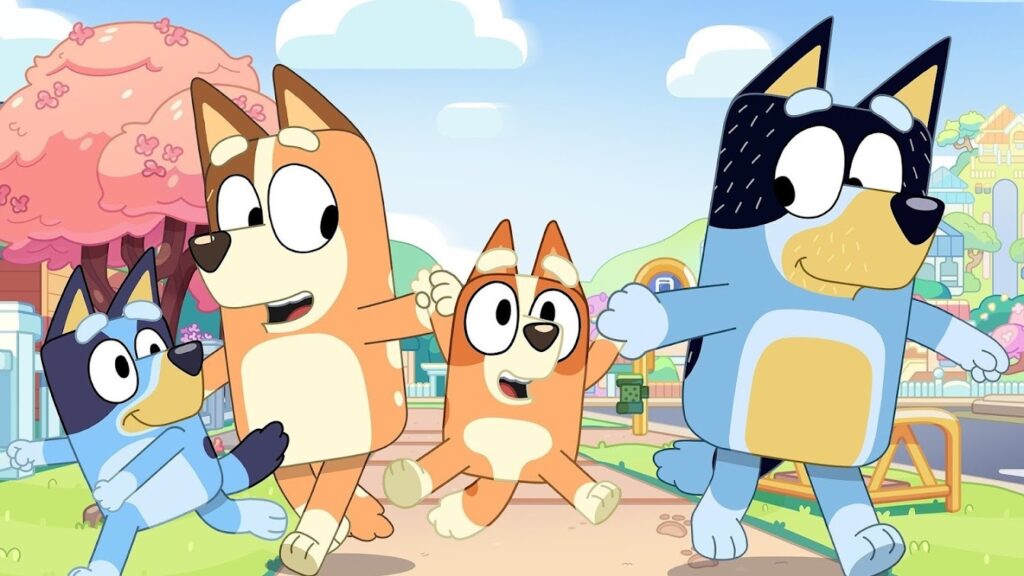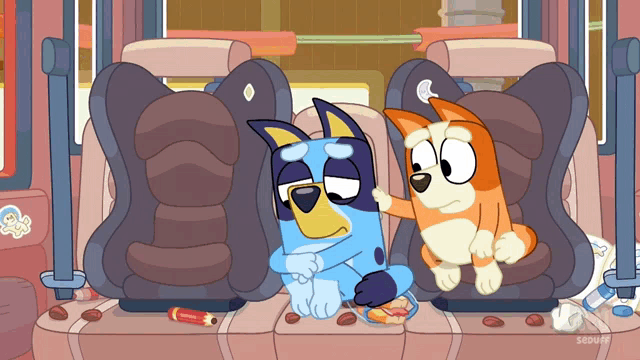What is ‘Bluey’ and why am I crying?

If you haven’t heard of Bluey, I’m not surprised. Unless you’re four years old, a parent or an animation nerd (like me) this show has no reason to be on your radar. But I’m a strong believer that good art should never go unnoticed, no matter its target audience…
Bluey is the brainchild of animator Joe Brumm, whose aim with the show was to depict his own parenting experience and the importance of imaginative play. Now into its third season, Bluey’s delightfully concise 8-minute episodes have captured kids the world over. If there’s anything pre-schoolers and I have in common it’s a short attention span so the speedy runtime made this an easy one to pop on out of curiosity after hearing the odd good word about it.
Oh boy. I could never have predicted the impact this show would have on me.
What hit me first was the almost unnecessarily nuanced animation of these rectangular dogs, each one imbued with startling attention to detail which is matched by the surrounding environments. Tail wags and droopy ears bring humour to each conversation, but remain grounded in reality thanks to the heartbreakingly honest voice work for titular Bluey and her little sister Bingo, whose giggles and screams could simply not be replicated by professional voice actors. Although anonymous, the little ones behind these voices deserve all the awards they can get.

I was also surprised by how rich and lived-in Bluey’s world felt. The real setting of Brisbane no doubt helps this, and Brumm’s own daughters provide much of the inspiration for the show, layering it with slice-of-life believability. All of this culminates in something very… watchable.
If this sounds like the bare minimum for good TV, try to recall the pre-schooler shows of your day – the likes of Dora The Explorer, perhaps. Can you see Swiper? *cue painfully long pause*. It’s safe to say there’s been room for improvement in this age bracket of television, and Bluey leaves those pauses and fourth-wall breaks behind. Instead, it treats its youngest audience with the respect they deserve whilst catering to all ages.
I know what you’re thinking, but when I say this is a show for all ages I’m not talking about the odd wink thrown in to keep parents from bashing their heads into walls. This show speaks to all ages, to being a brother, sister, mother, father, cousin and someone’s child all at once. It speaks to imperfection – the times when your parents lost their patience with you. The time you made another child cry in the playground, and couldn’t understand what you had done wrong. The first time you experienced death. Yes, really.
Herein lies the absolute magic of Bluey. It could have so easily been just another colourful show with recurring songs that will inevitably drive adults insane (looking at you, Baby Shark), frantically loaded onto iPads to calm screaming toddlers. It may well be used for that, but the care and candour poured into each tiny episode is more than can be said for half of Netflix’s offering.

So it now comes as no surprise to me that parents are turning Bluey on willingly. At its least, it’s not aggravating, and at its most, it can be deeply affecting. It encourages children to broaden their worldview and lays the foundations for conversations that would otherwise be very difficult to navigate with those so young.
At least, that’s what I imagine. I’m not a parent, but seeing moments I remember from my childhood acted out by this blue puppy and her family has been surreal and at times, very emotional. I am truly jealous of the children who have the absolute pleasure of knowing Bluey from a young age, and growing with its characters. It’s too late for me to experience that, but I’m excited to see how Bluey encourages more pre-schooler shows to respect, honour and entertain children and their parents all at once.
Minty’s takeaway:
If you’re looking for a comforting watch that takes you back to your childhood without making you feel babyish, stick Bluey on and let the laughs and tears take you by surprise.